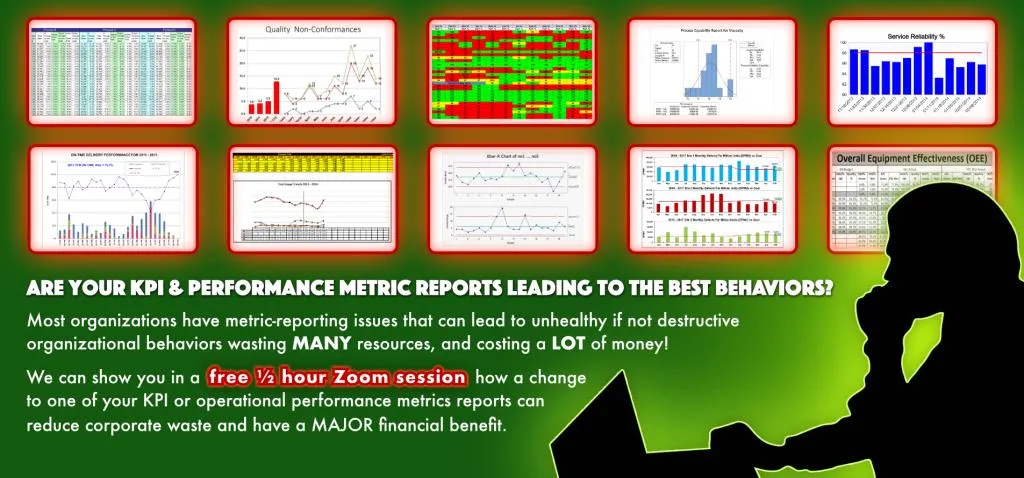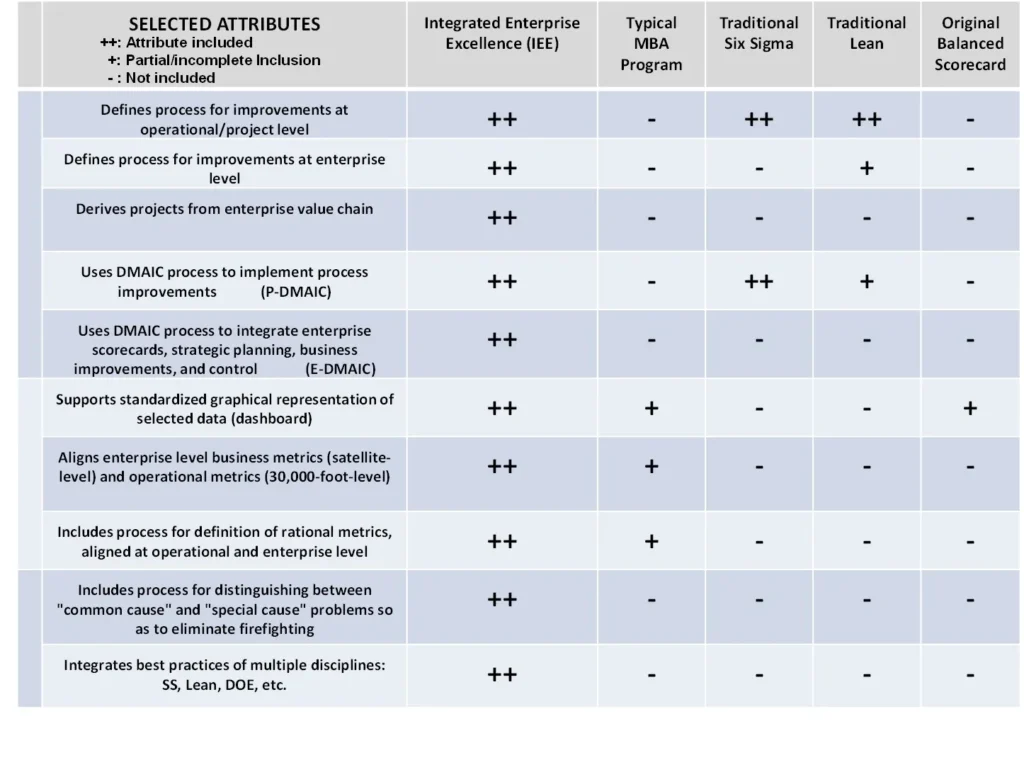Business Management System implementation efforts often fall short—not because of lack of effort, but due to a misalignment between the tools used and the business problems that truly need solving. Despite the availability of many business management systems, the same issues persist: misaligned metrics, underwhelming improvement efforts, siloed departments, and poorly communicated goals.
So what’s going wrong?
The answer lies in the very architecture of how most business management systems software is applied. In today’s fast-moving world, leaders need more than isolated dashboards and flavor-of-the-month improvement tools. They need an integrated, scalable solution—a Business Management System 2.0—that systematically links operations, strategy, and data in a way that drives sustainable results.
❝Every time we fixed one issue, another would surface somewhere else. We had metrics, tools, and software—but we didn’t have clarity. Then we found this new approach.❞
– Vice President of Operations, Mid-size Manufacturing Firm
🚩 Understanding the Core Problem: Ineffective Systemic Thinking
Despite billions spent annually on business process management systems and improvement programs like Lean, Six Sigma, Agile, and ERP deployments, most organizations still find themselves struggling with:
- Conflicting or siloed performance metrics
- Poor alignment between improvement projects and enterprise goals
- Inadequate communication across business units
- Management decisions made from gut instinct rather than data-driven insight
- Difficulty sustaining improvements long-term
- Limited ROI from software investments
Traditional business management information systems weren’t designed to solve these interconnected issues holistically. They focus on data collection and reporting, not insight generation and cross-functional alignment.
That’s where Business Management System 2.0, (i.e., Integrated Enterprise Excellence (IEE)) makes a difference.
📽 Overview of 30,000-foot-level Metric Reporting, a Component of Business Management System 2.0
✅ Business Management System 2.0: A Smarter, Unified Solution
Business Management System 2.0 isn’t just an upgrade—it’s a fundamental rethinking of how to design, measure, and improve a business. It integrates an organization’s purpose, performance measures, decision processes, and improvement initiatives into a cohesive framework. This approach, pioneered by the Integrated Enterprise Excellence (IEE) system, provides the missing architecture that links your business management systems software with strategy execution.
Here’s how it transforms your organization:
| Traditional Approach | Business Management System 2.0 |
|---|---|
| Red-yellow-green scorecards | Predictive, 30,000-foot-level metrics |
| Disconnected improvement tools | Integrated decision-making and analytics |
| Isolated improvement projects | System-wide alignment to financial goals |
| Subjective prioritization | Objective, data-driven project selection |
| Departmental silos | Enterprise-wide visibility and accountability |
❝We realized we were spending more time collecting data than using it to make smarter decisions. This system gave us the structure to finally connect the dots.❞
– Director of Strategy, Financial Services Firm
💡 A Closer Look: 17 Business Problems Solved
The transition to a Business Management System 2.0 directly addresses 17 of the most common and persistent management problems organizations face. Here’s how the new system helps resolve each one:
- Misleading Scorecards – Transforms static dashboards into actionable, predictive analytics using 30,000-foot-level metrics.
- Too Many Firefights – Reduces daily chaos by addressing systemic root causes through structured process evaluation.
- Unclear Priorities – Aligns improvement projects to strategic business objectives, removing guesswork.
- Wasted Resources on Low-Impact Projects – Prioritizes high-leverage initiatives that affect financial and customer KPIs.
- Data That Doesn’t Drive Decisions – Connects operational data directly to strategy and execution planning.
- Siloed Departments – Facilitates cross-functional understanding with enterprise-wide process mapping.
- No Strategic Measurement System – Provides an objective basis for strategy refinement and implementation.
- Ineffective Process Capability Reporting – Replaces traditional process metrics with meaningful business insights.
- Short-Lived Improvements – Embeds sustainability into the system via ongoing visibility and feedback loops.
- Employee Disengagement – Empowers team members with transparency and relevance in daily tasks.
- Lack of Visibility into Process Health – Simplifies complexity through visual, data-driven tracking of key processes.
- Unrealized Technology ROI – Enhances the impact of existing ERP, BI, and dashboard tools with better architecture.
- Guesswork in Strategic Planning – Anchors planning in real-world performance metrics and predictive analytics.
- No Link Between KPIs and Strategy – Builds end-to-end traceability from metrics to mission.
- Inconsistent Decision-Making – Drives standardized decisions with a common enterprise logic.
- Unclear Success Criteria – Defines success through measurable, aligned performance outcomes.
- No System for Improvement Project Selection – Systematically identifies and prioritizes opportunities based on ROI.
📊 Traditional Dashboards’s Confusion and Inconsistencies
30,000-foot-level Reporting in IEE resolves traditional metric reporting inconsistencies and confusion.

🎯 How the Business Process Managment System Works: From Reactive to Proactive
At the heart of this business process management system is the ability to view your organization holistically, rather than reactively. Instead of jumping from one problem to the next, you’ll be able to predict performance trends, identify root causes, and make proactive adjustments that support long-term goals.
The Business Management System 2.0 structure includes:
- Strategic Planning: Informed by baseline performance data, not just vision statements.
- Metrics Alignment: KPIs designed to reflect actual process behavior and long-term trends.
- Improvement Prioritization: Systematically determined, not chosen based on opinion or politics.
- Sustainability and Auditability: Transparent execution that links effort to result, with data to prove it.
❝We thought we had a performance management system. What we really had was a spreadsheet with colors. This changed everything.❞
– VP of Quality, Aerospace Supplier
🖼 Business Management Systems 2.0 Framework
The IEE Business Management Systems 2.0 Framework provides an orchestration of the many components of a business.

🔄 Integrating with Your Current Tools and Culture
One of the most powerful aspects of the IEE-based business management system is that it doesn’t require ripping and replacing your existing technology. Instead, it enhances the use of:
- ERP systems (e.g., SAP, Oracle)
- BI tools (e.g., Power BI, Tableau)
- Performance dashboards
- Project tracking systems
- Quality management software
This architecture becomes the guiding backbone that makes all other tools more useful and aligned.
And culturally? The change is evolutionary—not revolutionary. By demonstrating clear wins and transparency, the system earns buy-in at every level.
📽 Case Study – Transforming Strategy Execution with IEE Business Process Management System 2.0
See Mark Singleton explain the benefits of the IEE Business Process Management 2.0 system.
📈 Real Results: What Organizations Are Achieving
Companies adopting the Business Management System 2.0 approach have reported:
- 20–60% reduction in wasteful improvement efforts
- Significant increase in on-time strategic goal achievement
- Higher employee engagement in metrics and decision-making
- Improved customer satisfaction and financial performance
- Faster ROI on software investments
❝Within six months, we could trace how every improvement we made linked to enterprise-wide financials. That level of alignment was unheard of for us.❞
– Senior Process Improvement Manager, Healthcare System
The following table nets out the benefits of IEE over another business process management system that an organization may use.

🧭 Ready to Upgrade to Business Management System 2.0?
If your organization is facing any of the issues listed above, it’s time to rethink how your business is managed—not just the tools you use, but the system that defines how those tools are applied.
Business Management System 2.0 offers a practical, scalable, and proven way to:
- Align strategy with operations
- Improve decision-making through analytics
- Sustain performance improvements
- Get measurable, meaningful business results
It’s not about adding more software. It’s about building a smarter foundation.
🤝 Start Your Journey
Learn more about how Smarter Solutions can help your organization adopt a Business Management System approach that works. Whether you’re using Lean Six Sigma, Agile, ISO, or custom models, we help you integrate them into a unified system for measurable success.
📞 Contact us for a no-obligation consultation
📚 Explore real-world case studies and whitepapers
🎓 Inquire about training or workshops for your leadership team
